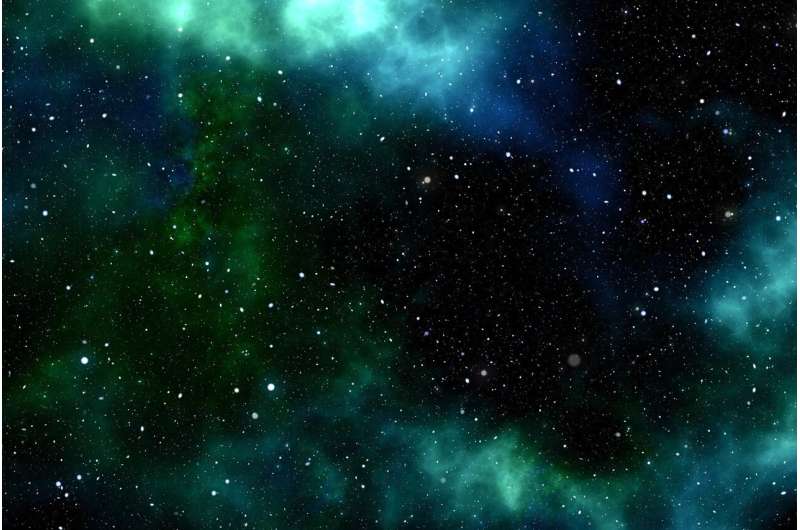Credit: Pixabay/CC0 Public Domain
An international team of astronomers has conducted a double-telescopic study of the zone where the Wow! signal originated and failed to detect any signal. In their paper published in Research Notes of the American Astronomical Society, the group describes their study and what they learned from it.
On August 15, 1977, the Big Ear radio telescope on the campus of Ohio State University recorded a 72-second narrowband signal onto a paper tape. Several days later, Jerry Ehman, an astronomer at the university, studied the tape and found the signal so unusual that he scrawled the word Wow! next to the data points.
Since that time, the signal has been discussed at great length in the astronomy community, but nobody has been able to explain its origin. And until now, no one has taken a detailed survey of the part of the sky where the signal originated. In this new effort, the researchers chose to rectify that situation by conducting a dual-telescopic study of the part of the night sky that is believed to be the source of the signal.
The researchers began by noting work done by Alberto Caballero who, this past May, had conducted an exhaustive search of the European Space Agency's, Gaia database, which contains data on more than 1 billion stars. He used the database to narrow down the possible star systems that might have been involved in the emission of the Wow! signal. In so doing, he narrowed down the possibilities to a single star, one called 2MASS 19281982-2640123.
The researchers focused their efforts on that star system using two telescopes, the Green Bank Telescope and the Allen Telescope Array. Both were pointed at the star system on the same day. The Green Bank studied the star for two half-hour periods, while the Allen array conducted six observations that were each five minutes long. There was also one period when the observations overlapped.
The researchers found no sign of a signal, much less one worthy of a "Wow!" But they noted that their effort showed that their approach is feasible and could be used to study other mysterious signals.
More information: Karen I. Perez et al, Breakthrough Listen Search for the WOW! Signal, Research Notes of the American Astronomical Society (2022). DOI: 10.3847/2515-5172/ac9408
© 2022 Science X Network
























